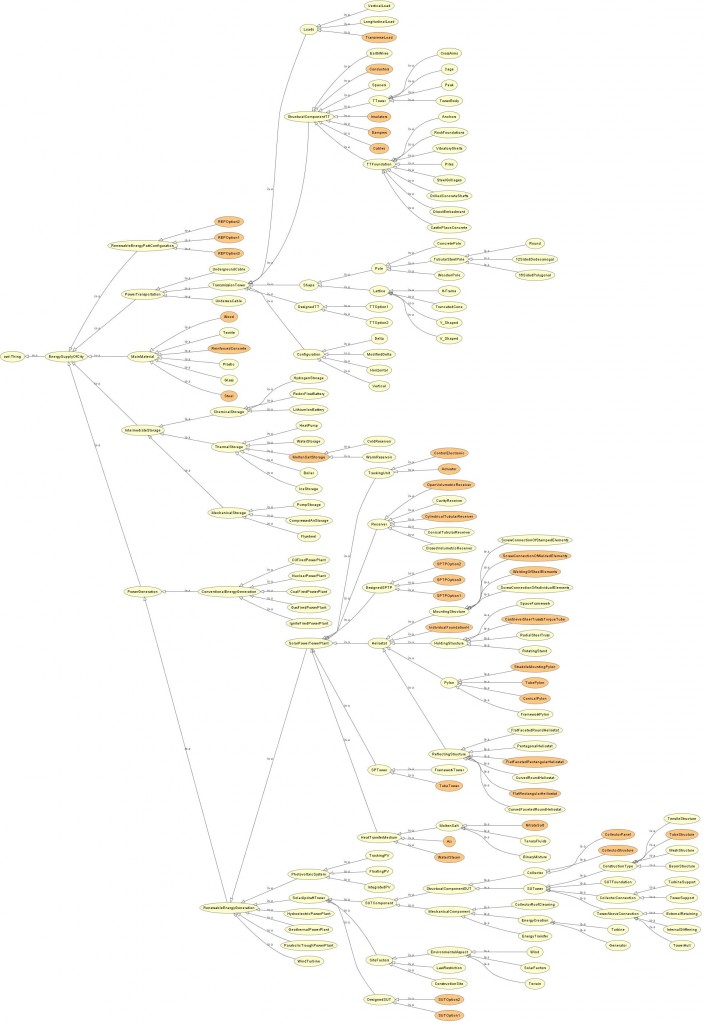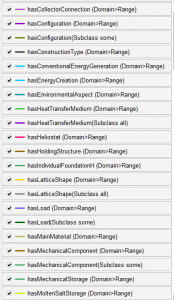In Fig.1 the hierarchic taxonomy of the resulting combined Ontology is represented in a tree-like form. Relations between the classes, subclasses and individuals are represented in Fig.2. Latter shows a high degree of interdependence between these classes and individuals, while the connections mostly originate from the “design classes” of each individual system as well as the class of the Renewable Energy Configuration. The most linked class is the parent class “EnergySupplyOfCity”. The lines represent the defined object restrictions (s. Fig.3)
Fig.1: RESULT – Representation of the combined Ontology [taken from Protégé]
Fig.2: RESULT – Representation of interconnection of classes, subclasses and individuals [taken from Protégé]
Fig.3: Description of Lines – Visualization of the property restrictions [taken from Protégé]
Besides a visual evaluation of the ontologic model, a reasoner can be used in order to understand and review the defined relations between the concepts. By starting the reasoner Pellet, relations between the individuals and classes based on the property restrictions are inferred and shown as object property assertions in the “individual by class” tab. Fig. 4 shows some results of the reasoning process for different individuals and the inferred relations are correct for every individual.
Fig.4: RESULT of Reasoning – Inferred Relations based on defined property restrictions [taken from Protégé]
Here the combined Ontology can be downloaded as a OWL-file:
See also:
Development of Combined Ontology
Introduction to Combined Ontology
Or main topics:
Integration Context and Individual Systems




